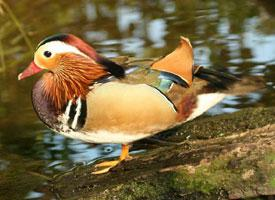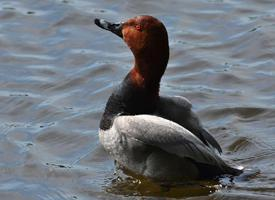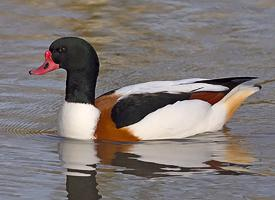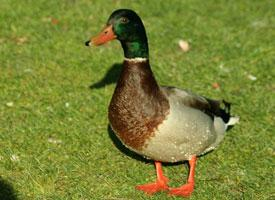
Popis zvířete
The Mandarin Duck (Aix galericulata) is a small, vibrantly colored waterfowl that belongs to the Anatidae family, which also includes ducks, geese, and swans. This species is native to East Asia, but it has been introduced to various other regions, including parts of Europe and North America, where it resides in parks, private collections, and occasionally in the wild due to escapes or deliberate releases. The bird is celebrated for its striking appearance, particularly the male's elaborate and colorful plumage, which has made it a symbol of fidelity and affection in some cultures, notably within Chinese and Korean traditions.Adult Mandarin Ducks are medium-sized birds, measuring approximately 41 to 49 cm in length, with a wingspan that ranges from 65 to 75 cm. They exhibit a marked sexual dimorphism, meaning that males and females have distinctly different appearances, especially during the breeding season. The male Mandarin Duck is renowned for its ornate beauty; it boasts a dazzling array of colors and ornamental feathers. Its breast is purple with two vertical white bars, and the flanks are ruddy, with two orange "sails" at the back. The face is striking, with a white crescent above the eye, a red bill, and a small red facial patch. In contrast, the female is more subdued in coloration, with a predominately mottled brown plumage that helps her remain camouflaged while nesting. Both sexes, however, share distinctive blue-green speculum feathers and a white-bordered teal patch on their wings, visible in flight or when they are displaying.
Mandarin Ducks prefer habitats that are close to water bodies, such as lakes, marshes, ponds, and rivers, surrounded by dense, shrubby forested areas where they can nest and hide from predators. They are perching ducks, which means they are capable of landing on branches and nesting in trees, unlike many other duck species. They often use holes in trees or nest boxes provided by conservationists as their nesting sites.
Their diet is omnivorous and varied, consisting of seeds, acorns, grains, plants, insects, small fish, and snails. They forage in the water by dabbling at the surface or by upending, though they can also feed on land.
Breeding usually occurs in the spring. The female lays a clutch of 9 to 12 creamy white eggs, which she incubates for about 28 to 30 days while the male stands guard nearby. Once hatched, the ducklings are precocial, meaning they are relatively mature and mobile from the moment of birth. The mother leads her brood to water shortly after hatching, where they begin to feed themselves.
Despite their beauty and popularity, Mandarin Ducks face threats from habitat loss, pollution, and hunting in their native range. Although currently listed as of Least Concern by the International Union for Conservation of Nature (IUCN), their populations in the wild are decreasing. Conservation efforts, including habitat preservation and the provision of nest boxes, are crucial to ensure the survival of these magnificent birds.
In conclusion, the Mandarin Duck is a captivating species whose striking appearance and interesting behaviors have endeared it to people across the world. As a symbol of love and fidelity, it occupies a special place in the culture and art of several Asian countries, and efforts to conserve its natural habitats are vital for its continued survival and enjoyment by future generations.
Podobná zvířata
Nové fotografie zvířat
Top 10 zvířat
- Chinese water dragon (Physignathus cocincinus)
- Galápagos tortoise (Geochelone nigra complex)
- Dolphin gull (Leucophaeus scoresbii)
- Japanese macaque (Macaca fuscata)
- Colombian red howler (Alouatta seniculus)
- Sea urchins (Echinoidea)
- Moustached guenon (Cercopithecus cephus)
- Diana monkey (Cercopithecus diana)
- Common reed warbler (Acrocephalus scirpaceus)
- Common house mosquito (Culex pipiens)


